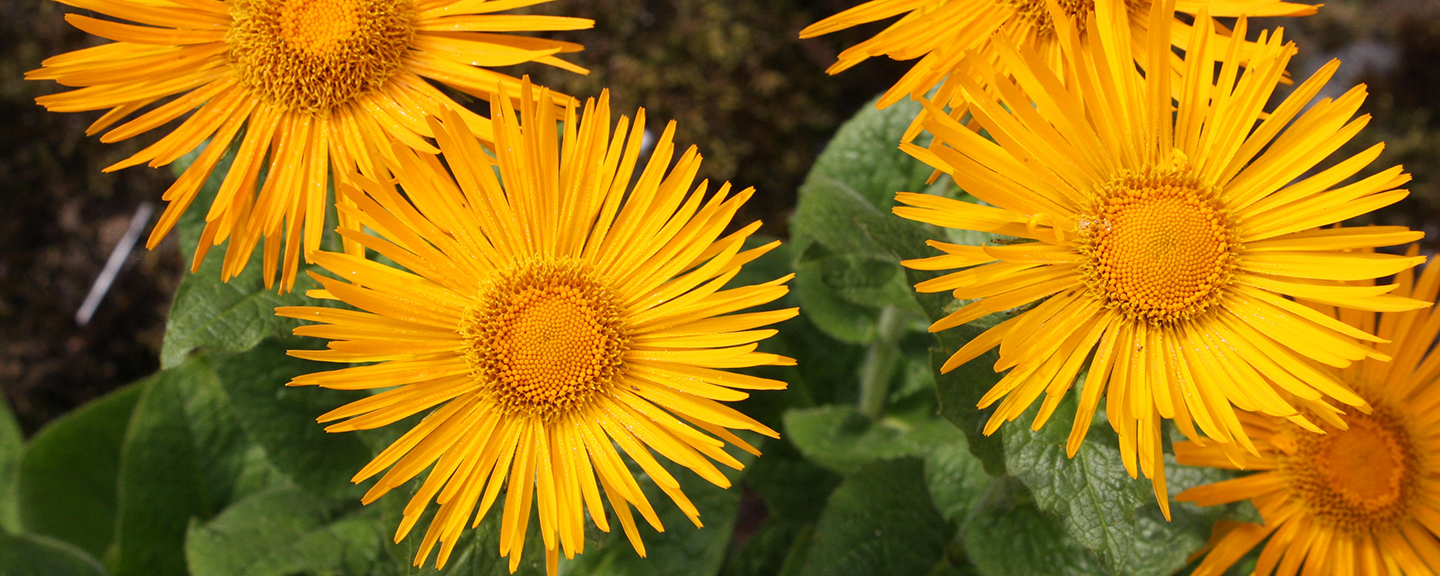Reykjavík Botanic Garden
Days to enjoy!
The Botanic Garden conserves a large portion of Icelandic vascular plants alongside a diverse range of foreign plants. It contains about 3,000 total species, subspecies, varieties, and cultivars. Arranged in eight collections, the plants offer an idea of plant diversity in the northern temperate zone.
Botanic Garden collections
The Icelandic flora
In 1961, Reykjavík City received a gift of 200 Icelandic plants for conservation, forming the foundation of the oldest collection in the Botanic Garden, Iceland's Flora.
This collection boasts about 300 of approximately 485 species of flowering plants and ferns that make up the Icelandic flora. We do our best to replicate their natural habitats, such as wetlands and geothermal areas.
Perennial plants
Foreign herbaceous plants add charm to the Botanic Garden, including wild species, their varieties, and cultivated plants.
A substantial portion of these perennial plants are arranged in beds according to their classification into genera and families. Thus, species from the same genus and genera from the same family grow side by side. Additionally, many foreign perennial plants serve as ornamental plants, ground covers, and filler plants around the garden. For instance, an exhibition of perennial plants with yellow flowers adorns a dedicated bed, similar to a decorative bed at the western end of the garden showcasing blue flowers.
Roses
While many unrelated plants' names contain 'rose' in some form—like heather roses and hollyhocks—it is the species of the Rosa genus that are the true roses.
Roses have long been intertwined with human agricultural history, with the earliest records of rose cultivation tracing back to around 2700 BC. Since then, people have diligently selected the finest specimens for breeding, resulting in cultivated varieties that meet both cut-flower growers' and gardeners' demands.
Some of these cultivated varieties thrive admirably in Iceland, and the Reykjavík Botanic Garden examples of outdoor-cultivated roses commonly found in Iceland. The rose cultivars are mostly placed around the restaurant, in front of the display greenhouse and gazebo. The Botanic Garden also curates rose species, displayed in a bed to the east of the Fyssa water artwork.
Rhododendrons
Rhododendrons grace the Botanic Garden since 1977. They flourish every May, putting on a strikingly beautiful display with their large, pink, bell-shaped flowers.
Woodland plants
The Reykjavík Botanic Garden cultivates many plants native to the Northern temperate zone's forest areas.
The common thread among woodland plants is that they prosper best in partial or full shade in a soil high in organic matter, slightly more acidic than regular cultivation soil. Many of these plants bloom before the trees leaf out and take advantage of the sunlight that reaches the forest floor.
In recent years, the Botanic Garden has sought to consolidate woodland plants in areas under leaf covers, such as the area around Laugatunga.
Arboretum
The arboretum currently tests numerous species of trees and shrubs. In the northern part of the collection, tree species are grouped by their native regions.
The arboretum is the largest collection of the Botanic Garden, spreading about 3.6 hectares (8.9 acres). Opened in 1989 and originally 1.2 hectares (3 acres) large, it was expanded by 2.4 hectares (5.9 acres) in the summer of 2011. Besides the arboretum, there are small collections of trees and shrubs in various parts of the Botanic Garden, including birch, lilac, pine, bush, and poplar species.
Alpine garden
The alpine garden features a selection of foreign alpine perennial plants and small shrubs. The plants are arranged according to their original habitats. Here you'll find plants from mountain areas in Europe, North and South America, Asia, and New Zealand.
Vegetables, herbs, and medicinal plants
The newest addition to the Garden's collections, the Vegetable, Herb, and Forage Plant Garden, opened in the summer of 2000. It cultivates a variety of vegetables, medicinal herbs, and forage plants.
